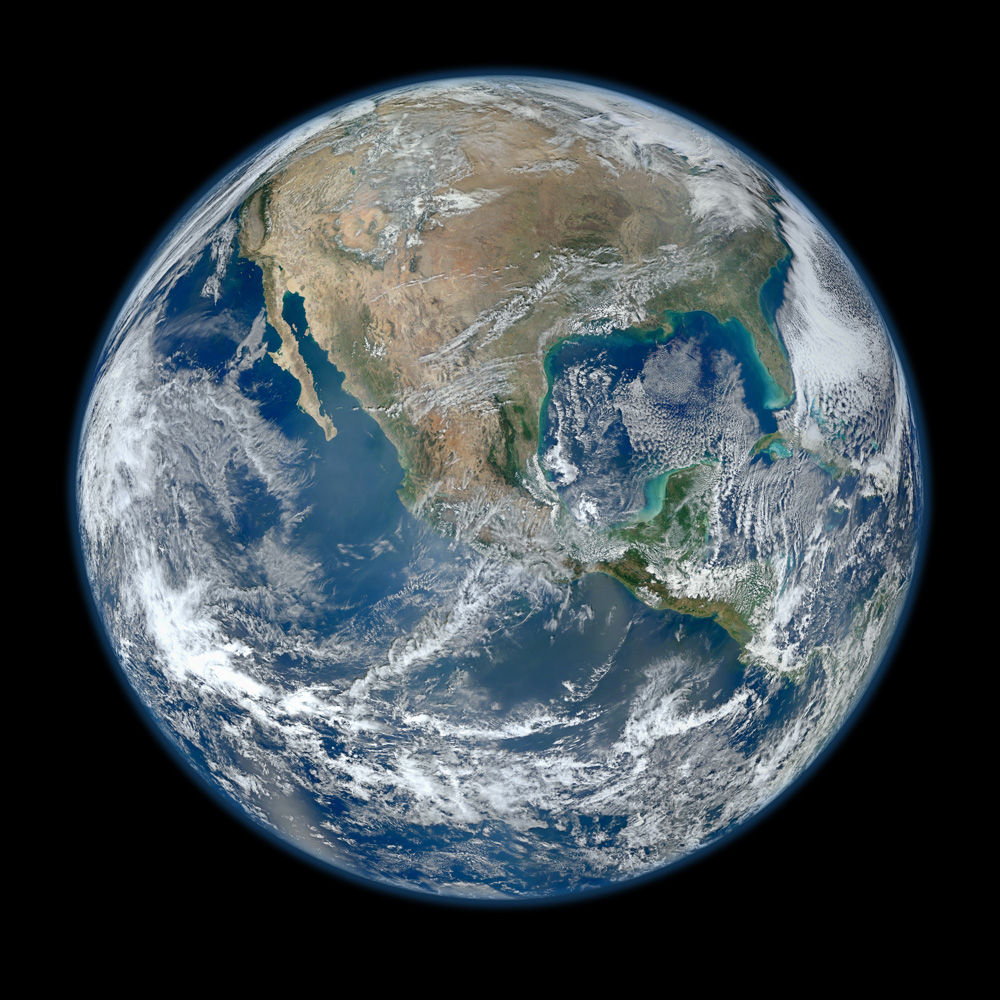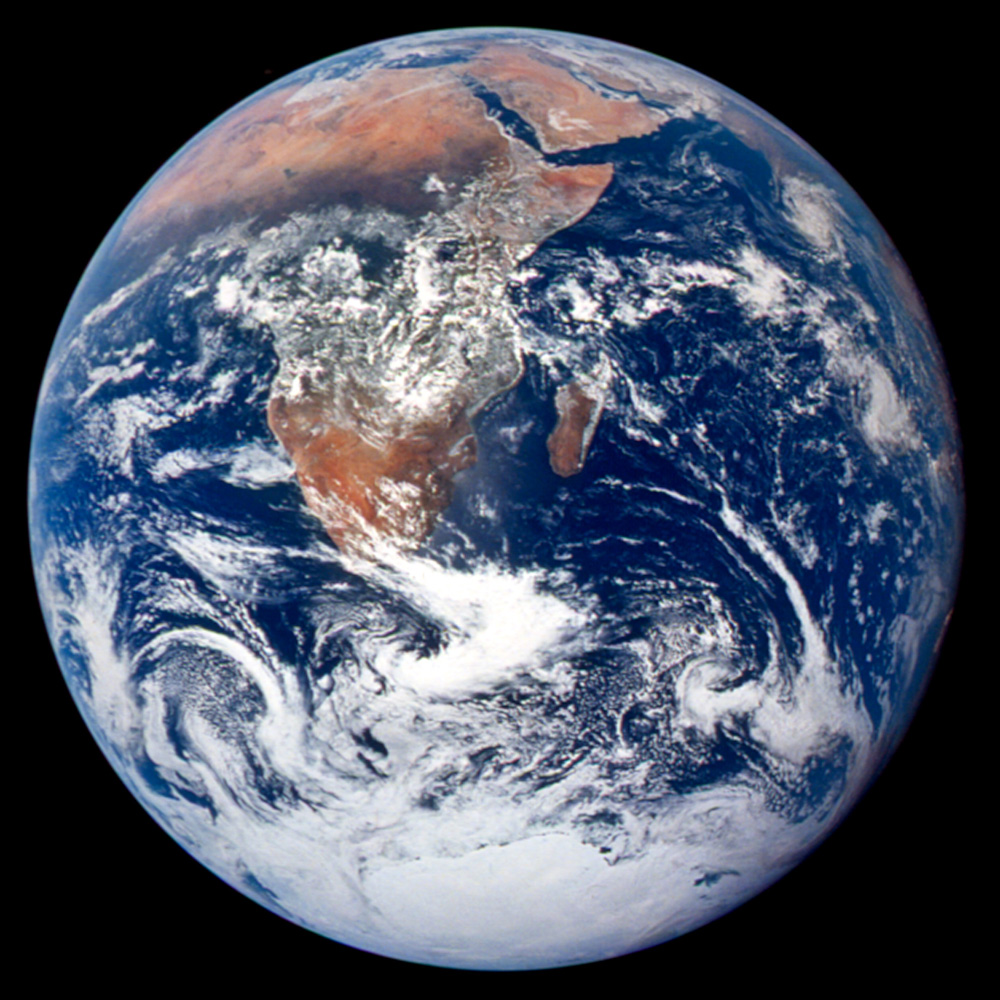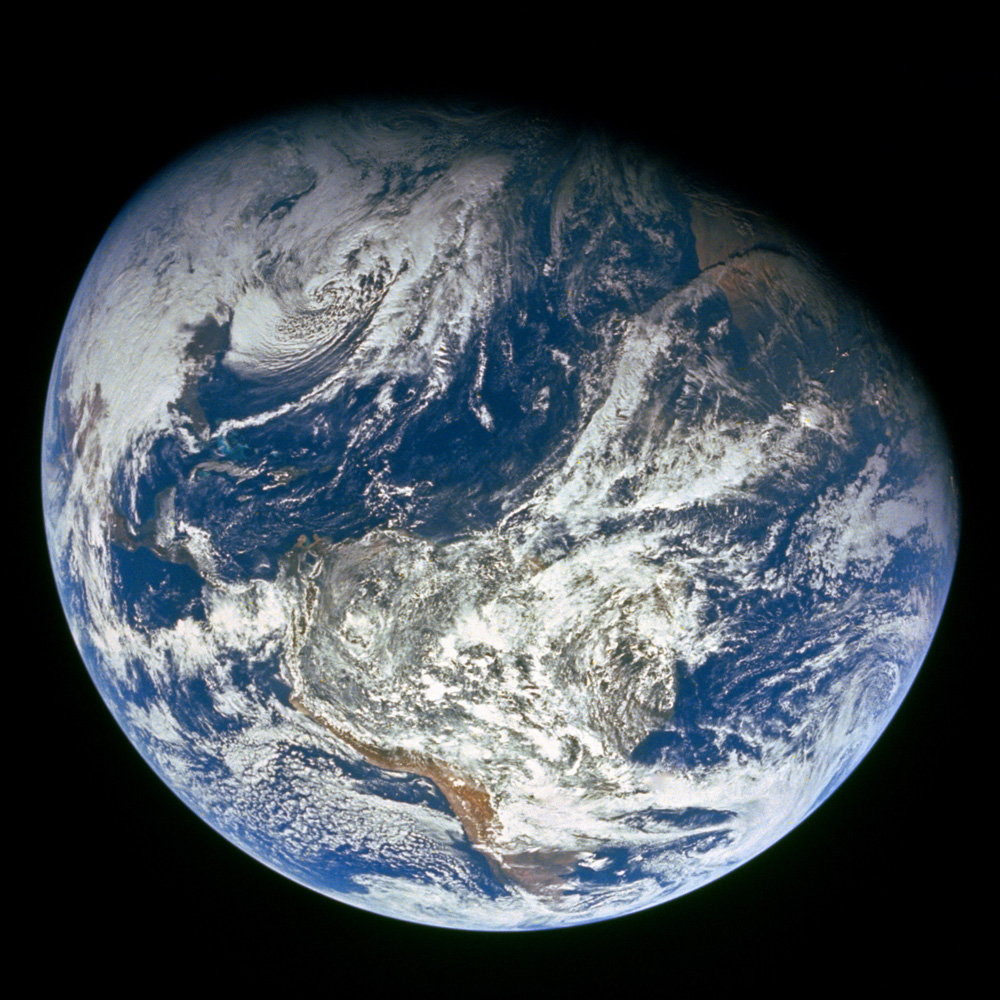
There were a lot of things that launched the environmental movement 40-some years ago—the pea-soup shroud of smog that used to hang over L.A., the sight of Ohio’s Cuyahoga River on fire. But nothing quite matched the power of the pictures beamed back to Earth by the Apollo astronauts on their way to the moon. We’d been seeing our home planet from low-Earth orbit for a number of years by then. What was always missing were human eyes that got far enough away so that the planet’s entire, 360-degree face fit into frame. Once we had that perspective, we saw our world anew: a tiny, fragile bauble in an infinity of blackness, something manifestly worth taking better care of.
Of all the pictures shot on all the moon trips, it was an image from the final one—Apollo 17—that made the greatest cultural impression. Dubbed “Blue Marble,” the picture which mission records suggest was taken by lunar module pilot Jack Schmitt) shows Africa and the Middle East, largely unobscured by clouds, from a distance of 28,000 miles (45,000 km).
Now, NASA has recreated the picture, without getting any farther than 581 miles (931 km) away, thanks to the Suomi National Polar-orbiting Satellite (Suomi NPP), which orbits the planet pole-to-pole rather than east to west. The relatively low altitude (compared to the Apollos at least) would make a full planetary profile impossible, but the ship was able to capture different high-def swatches of the planet and knit them together
into a single image. To capture that shot for real, a spacecraft would have to be 7,918 miles (12,743 km) away. While the satellite has never journeyed nearly so far, it did do Apollo 17 one better, taking portrait-quality images of both Earthly hemispheres, including North America. Somewhere down there, too tiny to see, is an L.A. with relatively clear skies and a Cuyahoga River now largely free of filth—and entirely free of flame. Sometimes it just takes a good look at ourselves to make us behave a whole lot better.




More Must-Reads from TIME
- Inside Elon Musk’s War on Washington
- Meet the 2025 Women of the Year
- For America’s Aging Workforce , ‘Retirement Is a Distant Dream’
- Why Do More Young Adults Have Cancer?
- Colman Domingo Leads With Radical Love
- How to Get Better at Doing Things Alone
- Cecily Strong on Goober the Clown
- Column: The Rise of America’s Broligarchy
Write to Jeffrey Kluger at jeffrey.kluger@time.com